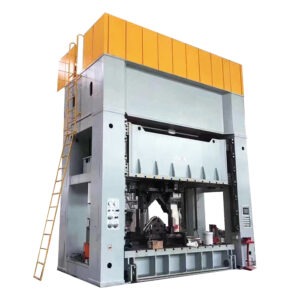Examining the Diverse Forms of Metallurgical Forming Machinery: What is Most Suitable for Your Needs?
Metal fabrication equipment plays a vital role in the engineering and fabrication sectors, enabling businesses to change raw metals into workable components and products. From the vehicle production to aerospace and infrastructure, the versatility of metal forming processes is essential for creating everything from intricate parts to big structural parts. Understanding the different types of metal forming machinery available can greatly impact manufacturing productivity and product quality.
As industries continue to evolve, so do the technologies and approaches used in metal forming. Whether you're a experienced professional or new to the field, choosing the suitable metal forming machinery can be a daunting task. This article will explore the multiple types of metal forming machinery, emphasizing their individual features and applications. By the end, you will have a clearer understanding of which options may align with your specific needs and manufacturing objectives.
Types of Metallurgical Forming Machinery
Metal forming machinery encompasses a diversity of devices meant to form metal into specific forms and dimensions. One common type is forging, which uses compressive forces to shape metal. This method enhances the metal's internal structure, improving its physical characteristics. This process can be performed with air-driven hammers, hydraulic presses, or mechanical presses, each offering distinct advantages depending on the application and required accuracy.
Another major type is bending, which is used to produce angular bends in metal sheets or plates. This form of equipment comprises press brakes and plate rollers, which can producing accurate curves and angles. Bending machinery is essential in industries such as construction and automotive manufacturing, where precise forms are necessary to assemble structural components.
Finally, stamping machinery is frequently employed for high-volume production. It involves the use of dies and punches to form metal components from flat sheets. These machines can produce detailed designs and are key in fields ranging from electronics to automotive. Their efficiency in bulk manufacturing makes them a popular option for manufacturers aiming to maintain consistency and reduce costs.
Guidelines for Selecting the Best Equipment
As you selecting metallurgical machinery, it is important to evaluate the specific requirements of your work. Evaluate the types of metallic materials you will be working with, as various machines are crafted for various materials such as metal, aluminium, or bronze. Moreover, consider the gauge and dimensions of the materials, as this will impact the machine's capacity and your entire production capacity.
Another important factor is the projected production volume. If you are working in a high-volume environment, spending in higher-end and computerized machinery may be essential. On the contrarily, for miniature operations or one-off projects, more manual or multipurpose machines may be enough. Assessing kiston-machinery and possible expansion will help in arriving at an intelligent decision that aligns with your business strategy.
Finally, budget constraints play a crucial role. It is necessary to examine the full ownership cost, including initial purchase cost, maintenance costs, and operational expenses. Striking a balance between effectiveness and value is crucial in guaranteeing that the machinery you pick not only satisfies your current needs but also provides durability and lasting performance over time.
Influence of Technology on Metal Shaping
The advancement of tech has considerably changed the field of metal forming equipment. Improvements in digital design and manufacturing have enabled more accurate and effective processes. Automated systems facilitate for faster setup times and reduced human error, leading to higher production rates and consistency in the standard of finished products. The integration of technology in metal shaping allows manufacturers to adjust to new designs and specifications swiftly, boosting their competitive edge in the market.
Furthermore, the growth of the fourth industrial revolution and intelligent manufacturing has led to smart technologies that track and optimize metal shaping operations in actual time. Sensors and data analytics provide information into the performance of machines and process effectiveness, enabling anticipatory maintenance and reducing downtime. This integration of technology not only boosts productivity but also improves the sustainability of operations by minimizing waste and energy consumption.
Additionally, the advancement of advanced materials and novel fabrication techniques has widened the range of metal fabrication practices. Techniques such as 3D printing are being researched alongside conventional techniques to create difficult shapes that were previously difficult to achieve. As tech continues to advance, metal forming machinery will probably develop further, providing new capabilities that can satisfy the changing demands of numerous industries.
